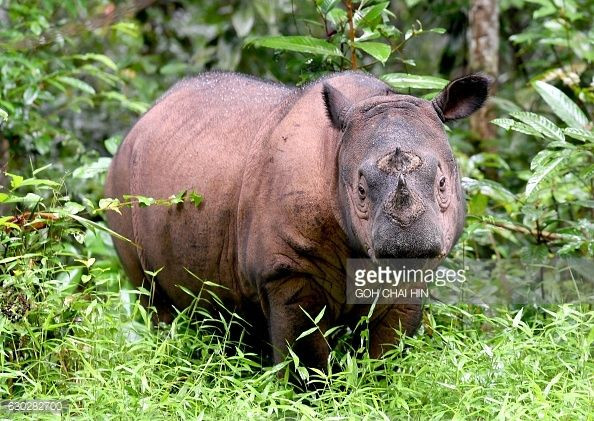Sumatran Rhino On Brink Of Extinction, Species Future Decided Million Years Ago

Rhinoceros lead tough lives. Their numbers in the wild are dwindling close to extinction because of mass poaching for years to gather their tusks which supposedly hold medicinal value. At least four species of Rhino roamed Africa at the beginning of 20th century. There were an estimated one million black rhinoceroses then and by 2001 this number dropped to just 2,300 black rhinos and we lost the western black rhinoceros forever.
For years, the sharp decline in Rhino population globally was attributed to inhumane poaching activities and mass killings but a new study detailing the Sumatran rhino — whose population is estimated to be a mere 200 individuals in the wild — and its history as a species on Earth has revealed that the Pleistocene epoch, which lasted between 2,588,000 to 11,700 years ago, was very rough on the species too and could explain the trouble their populations face worldwide now.
Now an international team of researchers have sequenced and studied the Sumatran rhino genome for the first time ever from a sample belonging to a male rhino, named Ipuh, which died at the Cincinnati Zoo in 2013. The insight they got from the analysis helped them pinpoint the cause for their current fall in numbers and have traced it back to a million years ago.
“Our genome sequence data revealed that the Pleistocene was a roller-coaster ride for Sumatran rhinoceros populations,” says Herman Mays Jr. of Marshall University.
“This species has been well on its way to extinction for a very long time,” said Terri Roth from the Center for Conservation and Research of Endangered Wildlife at the Cincinnati Zoo and Botanical Garden in a press release.
The Pleistocene epoch marked a period of suffering for large mammals near the modern-day location of Southeastern Asia called Sundaland. Fossil data showed an invasion of continental mammals into Sundaland around 900,000 years ago, according to researchers. By about 12,000 years ago—the end of the Pleistocene—many large mammals had suffered, and Sumatran rhinos were no exception.
The changing sea levels and major changes in topography that it caused, wreaked havoc on animal population in the region. The major Sundaland corridor was submerged as a result and the land connecting the islands of Borneo, Java, and Sumatra to the Malay Peninsula and mainland Asia disappeared into the ocean, isolating these creatures in a fast flooding area.
During this period, large herds were fragmented making them easier targets for hunters and loss of habitat just fuelled their eventual disappearance.
“Their population bottomed out and never showed signs of recovery,” Mays said.
The researchers came to these conclusions by using an approach called pair-wise sequential Markovian coalescent. PSMC makes it possible to elucidate the population history of a species from the genome sequence of a single individual, which is especially important for studying rare or extinct species. The team studied the observations from the PSMC study with ecological modeling to understand how changes in population size coincided with climate change in the past.
The researchers estimate that the Sumatran rhinoceros population peaked at an estimated effective population size of approximately 57,800 individuals about 950,000 years ago, which became a mere 700 about 9,000 years ago. Climate change during this period is said to have reduced the genetic diversity of Sumatran rhinos which reduced their resilience to a marauding human population.
“The Sumatran rhinoceros species is hanging on by a thread,” Roth says. “We need to do more to save it.”
These horned beasts are a direct reminder of a different time. A Rhinoceros' distinct appearance — with the horn and the thick, armor like skin — reminds us of creatures that used to roam Earth long before us. Three of the five rhino species in the world are extremely endangered and one extinct, with the numbers of the endangered hanging around the thousands and even hundreds in some cases.
These magnificent and fearsome looking vegetarians can reach speeds of over 32 miles per hour. In comparison, the fastest human Usain Bolt clocks in at 28 miles per hour and would be no match to this 2 ton giant.
This studywas reported in the journal Current Biology on Dec 14.
© Copyright IBTimes 2024. All rights reserved.




















